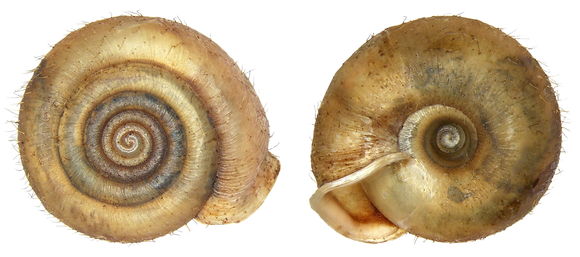
Interactions and Adaptations
Although not much is known about the specific interaction of Fumonelix jonesiana, much can be said about the interactions between land snails and their prey. Land snails have been found to be eaten by a variety of salamanders (Dourson, 2006). Also, beetles, mice, and shrews find land snails to be a tasty treat (Dourson, 2006). Land snails have many interactions with other species, but aquatic sails are an intermediate host of several trematode species of digenetic flukes, including Clonorchis sinensis (Hickman, et. al 2009). The miracidium larvae of the fluke in ingested by a snail, which then develops into the sporocyst and redia stages of the trematode life cycle (Hickman, et. al 2009). Cercaria larvae then emerge from the snail (Hickman, et. al 2009).
Terrestrial gastropods have evolved numerous adaptations to
allow them to live in a more harsh environment. Many land snails
have an operculum, a fleshy plate made of proteins, that covers the
opening of the shell when the snail withdraws itself inside
(Hickman, et. al 2009). This prevents water loss and protects
the animal from predation (Hickman, et. al 2009). A process
known as torsion is also an adaptation of Fumonelix jonesiana, as
well as most other Gastropods. This occurs when the mantle
cavity and the anus rotate to a position near the head and gills,
creating an issue for aquatic snails
(Hickman, et. al 2009). The snail's waste is
excreted over the gills, creating a fouling problem (Hickman, et. al
2009). Aquatic snails have further adapted to deal with this fouling
problem by altering their behavioral patterns, such as when they eat
and when they excrete wastes (Hickman, et. al 2009). Land
snails, because they have adapted to breathing air, instead of
gaining oxygen from the water, do not have to cope with this
problem.
Fumonelix jonesiana is also a part of the subclass Pulmonata.
It is classified in this group because, like other terrestrial
snails, its mantle is adapted to be an air-breathing lung (Hickman,
et. al 2009). Snails also have a coiled shell, which
makes this portable protection more compact, and making locomotion
much easier (Hickman, et. al 2009).
There are extensive interactions between snails and other species
and they have developed many adaptations to deal with their
surroundings. To learn some more interesting
facts about this species, go to the next
page.

